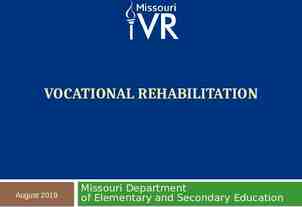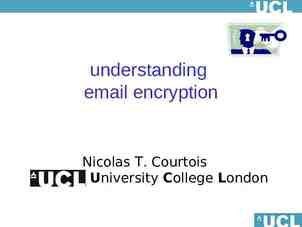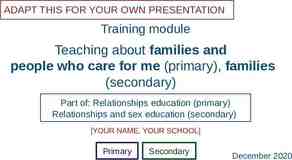Chapter 12 –Hazardous Waste Management (There are no homework
12 Slides192.00 KB

Chapter 12 –Hazardous Waste Management (There are no homework problems for Chapt.12) RCRA .vs. CERCLA – RCRA (Resource Conservation and Recovery Act,1976) ,which is enforced by the EPA, manages hazardous waste from its point of origin to its final disposal. Before RCRA took effect, sites “known as superfund” that were previously contaminated are funded for cleanup through CERCLA (Comprehensive Environmental Response, Compensation, and Liability Act).

Chapter 12 Options for Hazardous Waste Management: Eliminate or reduce waste quantities Reclaim and recycle the waste Stabilize the waste Incinerate the waste Apply modern land disposal methods Hazardous waste .vs. Hazardous materials Toxic Substance Control Act (TOSCA) manages hazardous materials so that they won’t become hazardous waste Toxic .vs. Hazardous Hazardous material/waste must be listed as such by federal regulations Hazardous waste must cause death or serious illnesses Any waste that contains a listed hazardous waste, regardless of the quantity is hazardous

Chapter 12 Four Primary Characteristic under RCRA Ignitability-burns less than 60 C to 140 F Reactivity – when mix can explode or form harmful vapors Corrosivity – includes strong alkaline or acidic substances [ph 2 or ph 12.5] causes rust in steel Toxicity Carcinogenic .vs. mutagenic – Carcinogenic are cancer causing where as mutagenic causes biological changes in children or offspring Not allowed in even a traceable amount TCLP (Toxicity Characteristic Leaching Procedure ) is used to determine the mobility of organic and inorganic compounds

Chapter 12 Additional Type Hazardous Properties Infectious or Medical Waste – i.e. human tissue from surgery, used bandages and needles, microbiological materials, etc. Radioactive – Nuclear power plants have waste that produce radiation which destroys living organisms. Decay half life extends its activity for thousands of years. Waste Sources Generator- Company which generates or produce hazardous waste. Large-Quantity – 2200lb(1000kg) Small Quantity –[bet. 220and 2200lb] Conditional Exempt Small –Quantity Generators-[less than 220lb or 100kg] Note: LQG (90day storage) and SQG (180 day storage) must obtain a EPA Id, Must handle waste properly before transport, and keep good records.

Chapter 12 Transportation HMTA (Hazardous Materials Transportation Act) Requires proper labeling and transport of all hazardous materials and waste. TSDF- Treatment, Storage, and Disposal Facilities are linked together in RCRA legislation. (This has prevented “midnight dumping”) Manifest System – “cradle-to-grave” is a system of accurately keeping track of source, transporters, disposal facility, quantities, emergency response,etc. (text p.379) Hazardous Waste Treatment Method Incineration – Thermal –Chemical process which causes a molecular change due to extreme high temperatures and a reduction in volume. Exceptions would be heavy metal (it just vaporizes) TCLP test is required for the residual material after burning, and to insure safety in landfills. Equipment includes rotary kiln, fluidized bed incinerator, multiple-hearth furnace, etc.

Chapter 12 Biological Treatment Process Genetically Engineered Bacteria –useful for breaking down organic waste from the petroleum industry Landfarming or Land treatment – mixing waste in soils that are non-agriculture but have high levels of microorganisms and nutrients for biodegradation Using plants in contaminated water to absorb contaminants Physical Treatment Process Solidification and Encapsulation by mixing with a concrete, asphalt, or plastic Soil Vitrification Process (melting soils at 1600 to 2900 F) USTs and Impoundments Underground Storage Tanks must comply with the updated RCRA requirements (1984) or be taken out of service (text. p.383) Surface Impoundments which are used for liquid hazardous waste must comply with a strict design for PPLs [pits, ponds, and lagoons] (text p.383)

Chapter 12 Landfills Liners- geomembrane or flexible membrane liner (FML) must have a permeability coefficient less that 10-6 mm/sec. (see text p.385) Landfills must have a double-liner, a cap for a cover, and a leachate collection system, as well as a network of monitoring wells to sample groundwater. Underground Injection- For disposal of liquid hazardous waste into a deep-well (.25 mi from an underground source of drinking water). The well is cased and cemented to protect drinking water contamination The injection pipe has three concentric pipes Geological formation must be limestone or sandstone layers wedged between impervious layers such as clays or rock.

Chapter 12 Site Remediation (Superfund) SARA (Superfund Amendments and Reauthorization Act) 1986 allocated 8.5 billion dollars for clean up of the National Priority List (NPL). Critical Path Network diagram involves the planning and scheduling for a site remediation project (text pp.389, Fig. 12.13) Field Sampling Methods Non-intrusive methods aerial photography surface geophysical surveys-Electromagnetics, ground-penetrating radar, gravity, and seismic surveys surface radiological surveys- gamma walk-over survey

Intrusive sampling methods Soil-Gas surveying- used for detecting Volatile Organic Compounds (VOCs) Field Screening Portable Photoionization detector (PID) good for contaminant level greater than 1ppm Sample Tube method contains ferromagnetic filaments and and an activated carbon absorbent which is left 1m in the ground for a certain time. A mass spectrometer is then used on the filament to identify organic compounds. Soil Sampling grab samples of surface soils hand-held augers for less than 5 feet SPT or Undisturbed Sampler using a drill rig for greater than 5 feet geoprobe- direct push method Groundwater Sampling Monitoring wells use bailers to collect water samples or submersible pumps

Chapter 12 Levels of Protection Level A –Selected when the highest level of respiratory, skin, eye, protection is needed. [Chemically resistance rubber full body suit is required, with a Self Contained Breathing Apparatus (SCBA)] Level B-Selected when the highest level of respiratory, but not as much skin protection is needed. [Chemically resistance uniform is required, with a Self Contained Breathing Apparatus (SCBA)] Level C –Selected when the types of airborne materials is known and its concentration. An air purifying respiratory is needed.[Dust proof uniform, normally Tyvec is worn with a respirator] Level D – Regular work uniform is required where there is no respiratory, skin, or eye protection needed. [Coveralls and Steel –Toe Work Boots]

Holes are identified by yellow paint. Ground contamination surrounding this tank. http://www.atsenvironmental.com/Site Photos.htm

environmental, continuously since then. http://www.mainetest.com/






